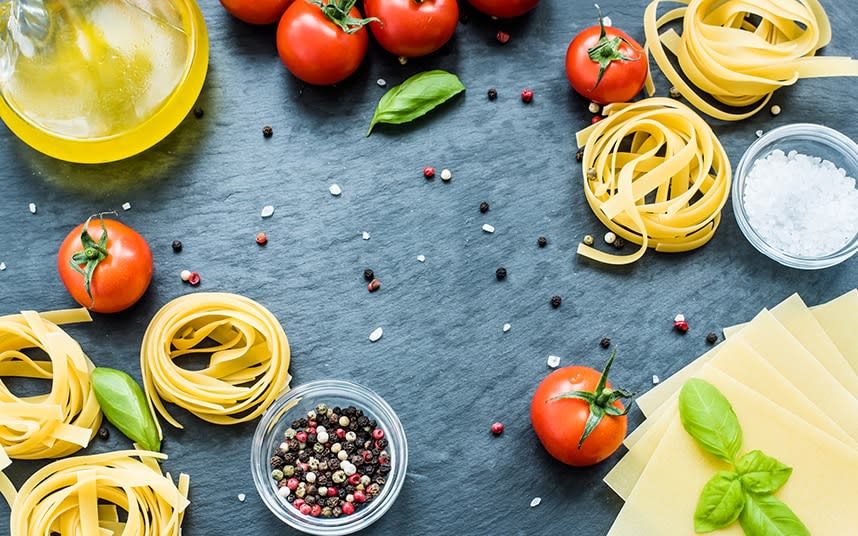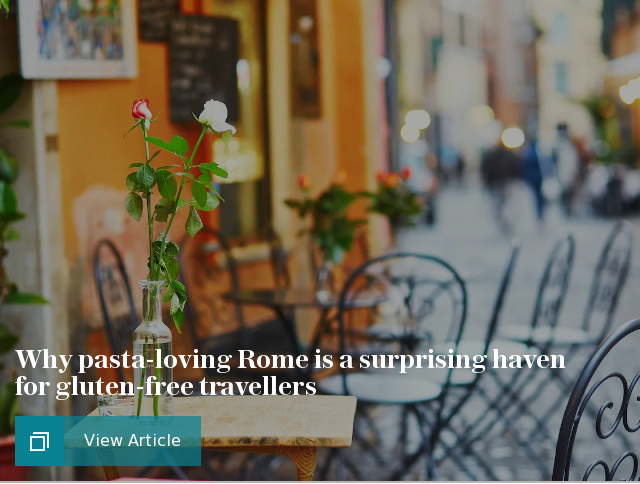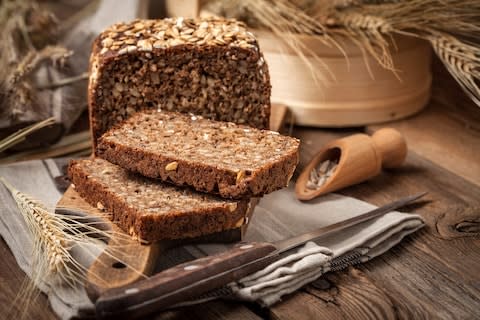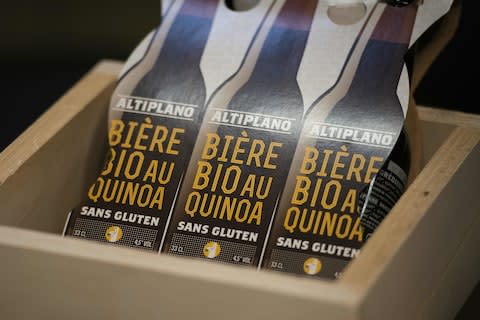Why Italy is actually the best destination for gluten-free travellers

The summer before my husband, Dan, was diagnosed with coeliac disease we hired two Tuscan villas overlooking a pool with three other families.
For the next week, the whole gang (eight adults, eight children) ate pizza in nearby Florence, ordered bowls of pasta at the local trattoria and bought bundles of fresh bread to eat poolside with cheese and bottles of wine.
A month later we took our two daughters, then aged one and four, to Disney World in Florida and enjoyed American-style burgers and sticky ribs.
The summer was rounded off with a week in Whitstable with friends where we enjoyed mussels with crusty bread and ate fish and chips on the beach. Like most people, our holidays were wonderfully synonymous with gastronomic indulgence, if mysterious and excruciating pain for Dan.

Then in June 2015, he was diagnosed with coeliac disease. And as we scrutinised food labels and questioned waiters, we realised we’d never be able to holiday in the same way again. In fact, we were so despondent that we didn’t book time away for the next two years.
Coeliac disease is a lifelong autoimmune condition that affects one in every hundred people in Britain. It’s estimated that only 24 per cent of sufferers know they have it, but new research shows a fourfold increase in diagnosis in the last few years.
With coeliac disease, the immune system reacts to gluten (a protein found in wheat, barley and rye), attacking and damaging the lining of the intestinal wall, with symptoms including weight loss, bloating, tiredness, vomiting and diarrhoea. The only treatment, and cure, is a gluten-free diet.
While bloating may seem harmless, over time, unmanaged coeliac disease can lead to osteoporosis, iron deficiency and malnutrition as damage to the intestinal lining prevents nutrients from being absorbed properly and coeliacs are twice as likely to develop bowel cancer.

But it’s not enough to simply avoid foods containing gluten; as we quickly learnt, cross contamination is the silent foe of coeliacs and makes holidays a health hazard.
Dan can’t eat gluten-free bread that’s been in a toaster after regular bread because one minuscule crumb can result in a day of vomiting and stomach pain. Nor can he have his meals prepared in an area, pan or on a chopping board where gluten-containing foods have been.
So hotel buffets are out, as are shared kitchens (like in our Tuscan villa) unless the whole group goes gluten-free and all utensils are replaced. Restaurants need a separate preparation area and the language barrier abroad makes ensuring that rather tricky. Even in Britain, we’ve encountered waiters who don’t understand the condition or glaze over when we ask about cross contamination.

Dan assumed he’d never be able to enjoy his favourite beer, bread or Italian holiday again. But while you can buy gluten-free beer and bread, can there ever be a gluten-free Italy?
Well yes, as it turns out. “The worst place for coeliacs is actually the best place for coeliacs,” says Ian Marber, a nutritionist who was diagnosed with coeliac disease in 1995.
“When I was first diagnosed I didn’t visit Italy for years. But in recent years it’s got better and I’ve travelled to Portofino, the Amalfi Coast, and even in the depths of Tuscany I’ve found fantastic restaurants with staff who find questions about cross contamination normal.”
The change owes much to a national coeliac screening programme introduced in Italy around 2005 (it has since been phased out due to cost). “It raised awareness and put the disease in the spotlight,” says Dr Alessio Fasano, an Italian living in the US and the director of the University of Maryland’s Centre for Coeliac Research. “Gluten is such a major part of the Italian diet they started screening schoolchildren.
“The Italian Coeliac Society strongly advocates the rights of sufferers, and you can visit their website (celiachia.it) and get an updated list of pizzerias, trattorias, gelaterias and B&Bs in any region that are certified gluten-free.”

Dr Fasano says that while Italy and the rest of Europe have a strong network of coeliac societies (he singled out Spain, France, and Scandinavian countries for praise), the US has taken a while to catch up; “America is gradually becoming more coeliac-friendly, especially in California because of the popularity of gluten-free diets.”
However, Dr Fasano says this trend has been both a blessing and a curse for travellers: “It has pushed restaurants and hotels to offer more varied and palatable gluten-free food than they did five years ago. However, the flip side is it has almost trivialised the disease and some places may not realise you’re doing it for a serious medical reason.”
“I have a saying when I travel,” the nutritionist Ian Marber joked to me: “I’m proper gluten-free, not LA gluten-free.”
People tend to take you more seriously when you’re travelling with a coeliac child according to my friend, Kate, whose daughter, Poppy, seven, was diagnosed aged one. “The first two summers after Poppy’s diagnosis we stayed home, fearful about cross contamination and the language barrier,” she says. “However, by her third birthday, we were feeling brave and went to France. We printed off translation sheets (available at coeliac.org.uk; click on ‘Gluten-free diet and lifestyle’ and then ‘Holidays and travel’) but we rarely ate out, preferring to self-cater as we were impressed with the French supermarket’s gluten-free section,” Kate explains.

“The following year we self-catered in France again, but also ate at a restaurant called Buffalo Grill which has a great allergy policy – and tasty burgers.
“In France it’s considered a travesty to put breadcrumbs or flour in good meat. We had a similarly positive experience the following year just south of Marbella, where we found a gluten-free pizza restaurant run by a British coeliac which we’d found out about via Google before we went away.”
Dan and I did similar research before taking the girls back to Florida this year, our first trip abroad since his diagnosis. As well as downloading the Find Me Gluten Free app (free) we typed “‘coeliac”’ and “‘gluten”’ into Trip Advisor, and arrived with a list of safe restaurants to visit.
Ian Marber’s advice to eat a meal at the airport before you board (even if you’re not hungry) came too late for us – Dan’s gluten-free in-flight meal was so tough and unpalatable he didn’t eat a single thing for the nine-hour flight. But we did pack food in our suitcase in case we couldn’t find a suitable restaurant (“packet oatcakes and nuts are good, and you can buy fruit when you get there,” says Marber).

“Finally, but perhaps most importantly, I urge coeliacs to keep travelling,” says Dr Fasano. “Be prepared, yes, but also be adventurous.” With that in mind, our trip back to Italy in 2018 is already booked.
The rest of the world: Five of the best gluten-free stays
1. Mark Warner Levante Beach, Greece
Caters brilliantly for coeliacs. Seven nights half-board from £729pp, with flights (markwarner.co.uk)
2. Chalet Chardon Bleu, St Martin de Belleville, France
This Les Trois Vallées spot caters for the gluten intolerant. From £425pp for a week (peak-pursuits.com).
3. Four Seasons at Sayan, Ubud, Bali
Gluten-free afternoon tea by the pool each day. Rooms from £414 per night (fourseasons.com).

4. Nobu Ibiza Bay, Spain
Has a restaurant dedicated to smoothies and gluten-free food. Rooms from £658 per night (nobuhotelibizabay.com)
5. Grand Palladium Lady Hamilton, Jamaica
One of the resort’s restaurants, has a special gluten-free menu. From £339 per night (palladiumhotelgroup.com)

